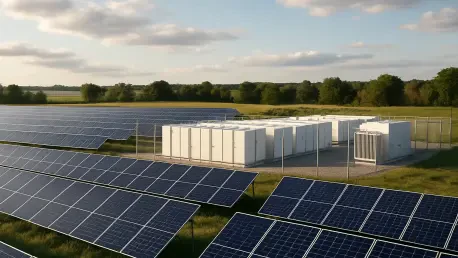Allow me to introduce Christopher Hailstone, a seasoned expert in energy management, renewable energy, and electricity delivery. With a deep understanding of grid reliability and security, Christopher brings invaluable insights to the table. Today, we dive into the innovative Winchester project by Torch Clean Energy in Arizona, exploring its role in advancing clean energy, the integration of cutting-edge battery storage technology, and its broader impact on regional grid stability and economic growth.
Can you walk us through the vision behind Torch Clean Energy’s Winchester project in Arizona?
Absolutely. The Winchester project is an ambitious endeavor located in Cochise County, Arizona, featuring two 80 MW solar arrays. The vision is to harness the abundant solar potential of the region to deliver clean, sustainable energy. This project, set to come online in 2027, is designed not just to generate power but to address critical needs like grid balancing and supporting the anticipated growth in energy demand. It’s about creating a reliable energy future while fostering local economic development and infrastructure investment.
What factors led to choosing Cochise County as the location for this project?
Cochise County was selected for a variety of reasons. The area offers exceptional solar irradiance, which is crucial for maximizing the efficiency of the arrays. Additionally, its proximity to existing grid infrastructure made it a practical choice for integration and distribution. We also considered the community’s needs and the potential for local partnerships, ensuring the project aligns with regional energy goals and provides tangible benefits to the area.
How does the Winchester project aim to tackle the challenge of grid balancing in the region?
Grid balancing is a core focus of the Winchester project. By pairing the solar arrays with a robust 160 MW / 640 MWh battery storage system, we’re able to store excess solar energy generated during peak sunlight hours and dispatch it during high-demand periods, like evenings or cloudy days. This capability smooths out fluctuations in supply and demand, ensuring a more stable and reliable grid for the region.
Can you elaborate on the role of Fluence Energy’s technology in making this project successful?
Certainly. We partnered with Fluence Energy for their expertise in battery storage solutions, specifically their Gridstack Pro 5000 system. What stood out was their ability to provide a scalable, efficient storage solution tailored to the needs of a solar-plus-storage facility like Winchester. Their technology allows us to shift solar generation to when the grid needs it most, and their focus on domestically manufactured components also aligns with broader incentives and project goals.
What impact do you anticipate this project will have on the local community and economy?
The Winchester project is expected to bring significant benefits to the local community. Beyond providing affordable and reliable power, it will drive economic activity through job creation during construction and operation phases. We’re also investing in local infrastructure, which will have a lasting positive impact. It’s a win-win—supporting energy security while contributing to the region’s growth and development.
How does the battery storage capacity contribute to the overall reliability of power in the area?
The 160 MW / 640 MWh battery system is a game-changer for reliability. It ensures that we can store a substantial amount of solar energy and release it precisely when demand peaks or when solar generation dips. This reduces the risk of outages and minimizes reliance on less sustainable backup sources. For the local community, it translates to a steady, dependable power supply, even during challenging conditions.
Why is the domestic manufacturing aspect of the battery system important for this project?
The domestic manufacturing of key components like enclosures and inverters in Fluence’s system is a significant advantage. It qualifies the project for domestic content tax credits, which provide financial benefits that help keep costs down. More importantly, it supports U.S. manufacturing and jobs, aligning with a broader commitment to strengthening domestic supply chains and promoting sustainable economic growth within the clean energy sector.
How does a project like Winchester fit into the larger trend of clean energy development across the United States?
The Winchester project is a microcosm of the rapid clean energy buildout happening nationwide. With projections showing utility-scale battery storage doubling to nearly 65 GW by 2027, projects like this are pivotal. They demonstrate how solar and storage can work together to meet growing energy needs, reduce carbon footprints, and enhance grid resilience. It’s a stepping stone toward a future where renewable energy is the backbone of our power system.
What is your forecast for the future of solar-plus-storage projects in the U.S.?
I’m incredibly optimistic about the trajectory of solar-plus-storage projects. As technology continues to advance and costs decline, we’ll see even greater adoption across diverse regions. These projects will become central to achieving energy independence and decarbonization goals. I expect innovations in battery chemistry and grid integration to further boost efficiency, making solar-plus-storage not just viable but the preferred choice for utilities and developers in the coming decade.









